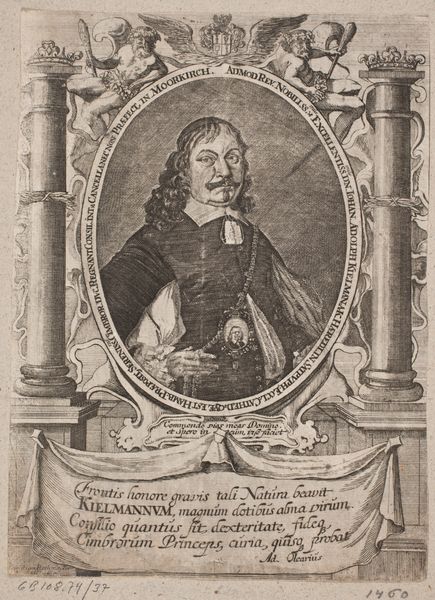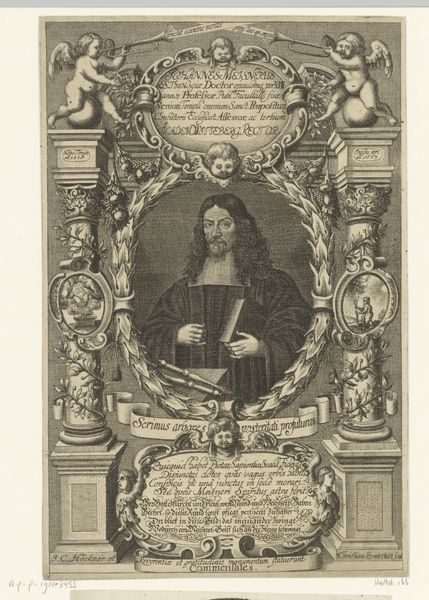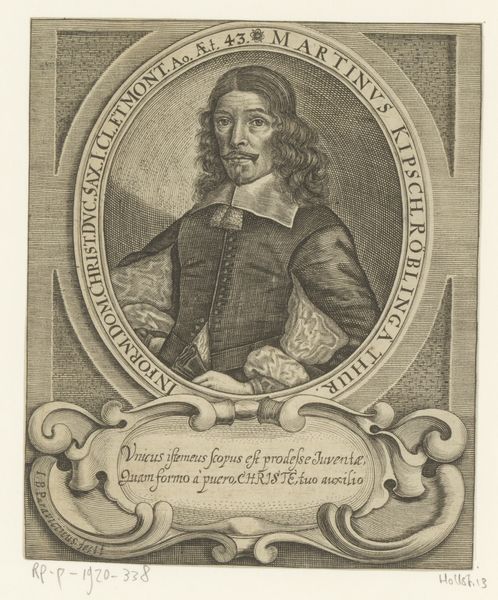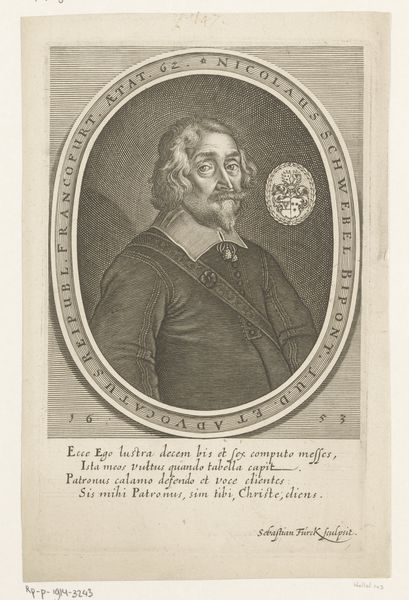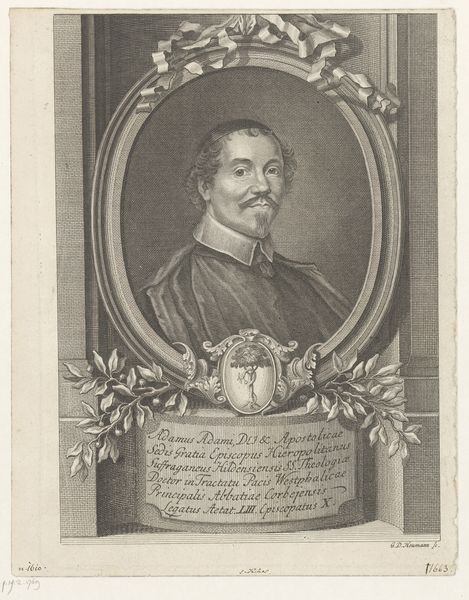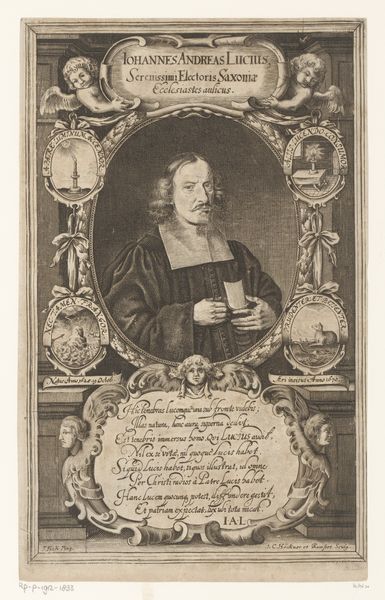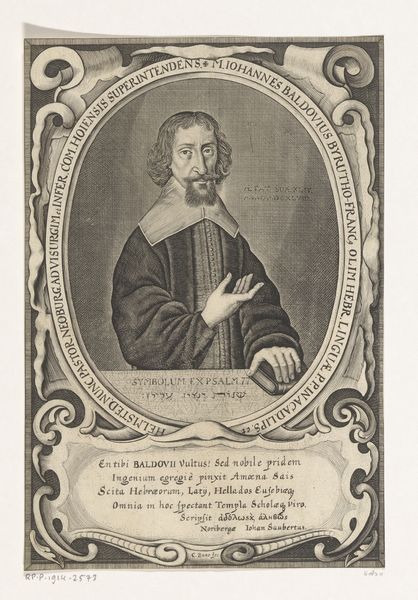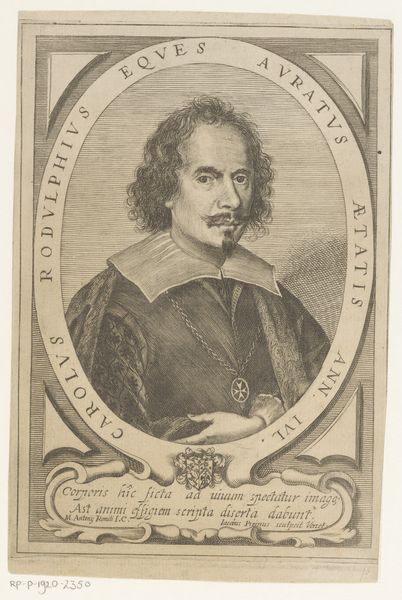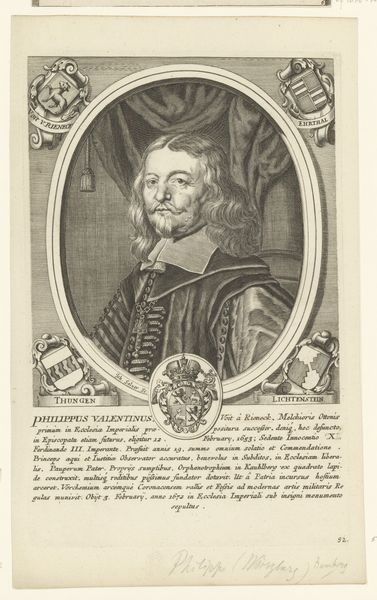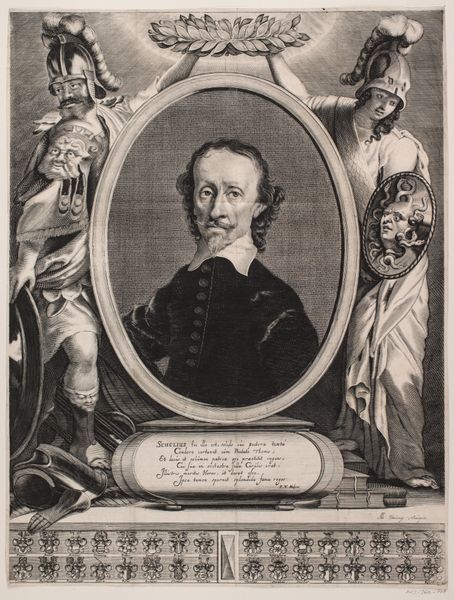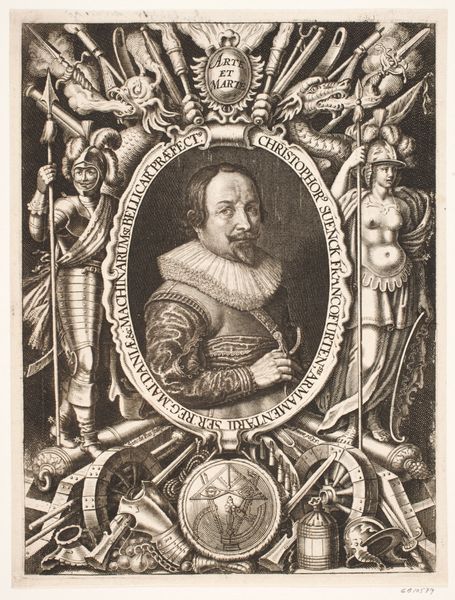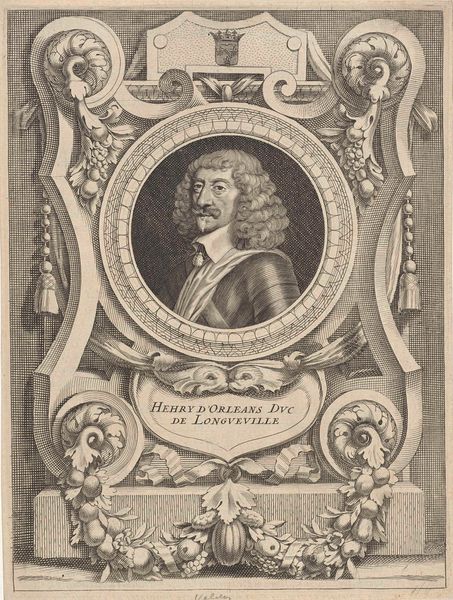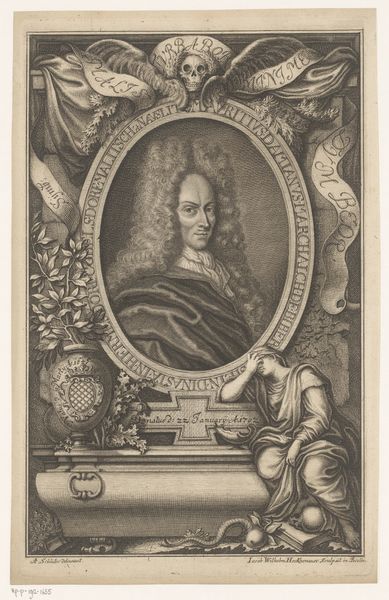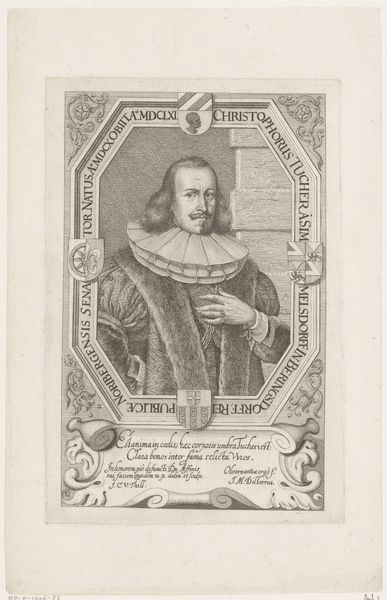
print, metal, engraving
#
portrait
#
baroque
# print
#
metal
#
line
#
history-painting
#
engraving
Dimensions: height 281 mm, width 221 mm
Copyright: Rijks Museum: Open Domain
Editor: This engraving, "Portret van Jakob Metzner" by Andreas Frölich, dates from 1655 to 1671. I find the contrast of dark and light and the surrounding cherubs quite striking, giving the portrait a heavenly yet stately mood. How do you interpret the imagery at play here? Curator: Indeed, the contrasts are key. The chiaroscuro isn't just aesthetic; it visually enacts Metzner's duality, the split background mirroring a life lived between worlds. Notice how the cherubs, normally symbols of innocence, carry objects alluding to power—scales and scrolls—suggesting a commentary on earthly versus divine authority. What significance might those symbols have carried for viewers at the time? Editor: So, the cherubs aren't just decorative; they're integral to understanding Metzner’s role in society? It seems like he held considerable political or civic power if the scales symbolize his legal judgments, and the scroll is emblematic of the written laws or decrees that he produced and abided by. Curator: Precisely. Furthermore, look closely at his coat of arms placed prominently. What symbols within do you find significant? Heraldry was carefully constructed. Even seemingly simple figures carried deep-seated meaning that announced family history and status. The inclusion, strategically placed, serves as a crucial mnemonic for those familiar with that visual language. This form of portraiture sought not only to depict likeness, but to embody lineage and values. How effective is it, do you think, in conveying that sense of legacy today? Editor: It’s a powerful reminder of how symbols operate as a visual shorthand. It reveals how portraits functioned not just as depictions, but as intricate visual biographies. I definitely see this print in a different light now.
Comments
No comments
Be the first to comment and join the conversation on the ultimate creative platform.
